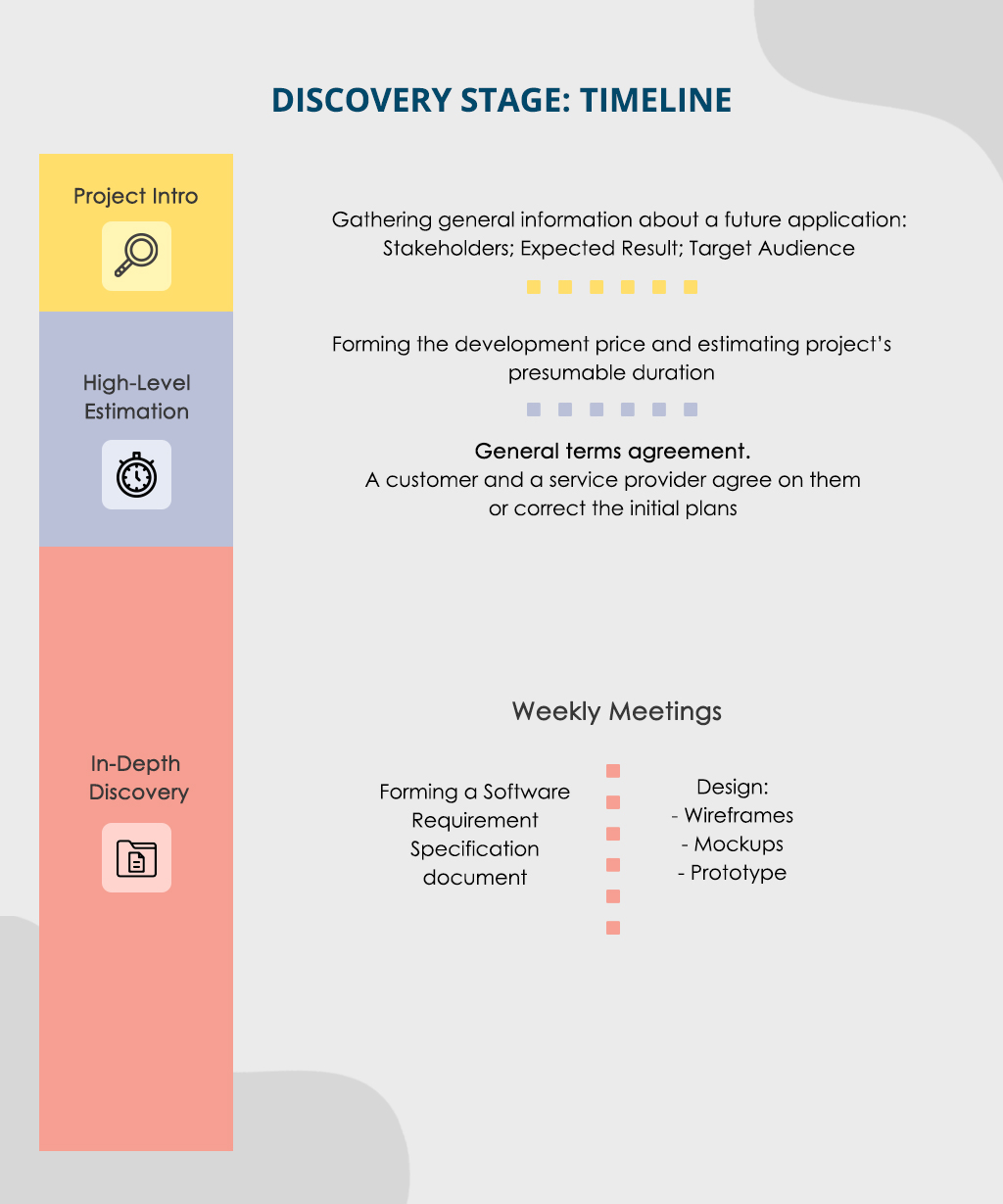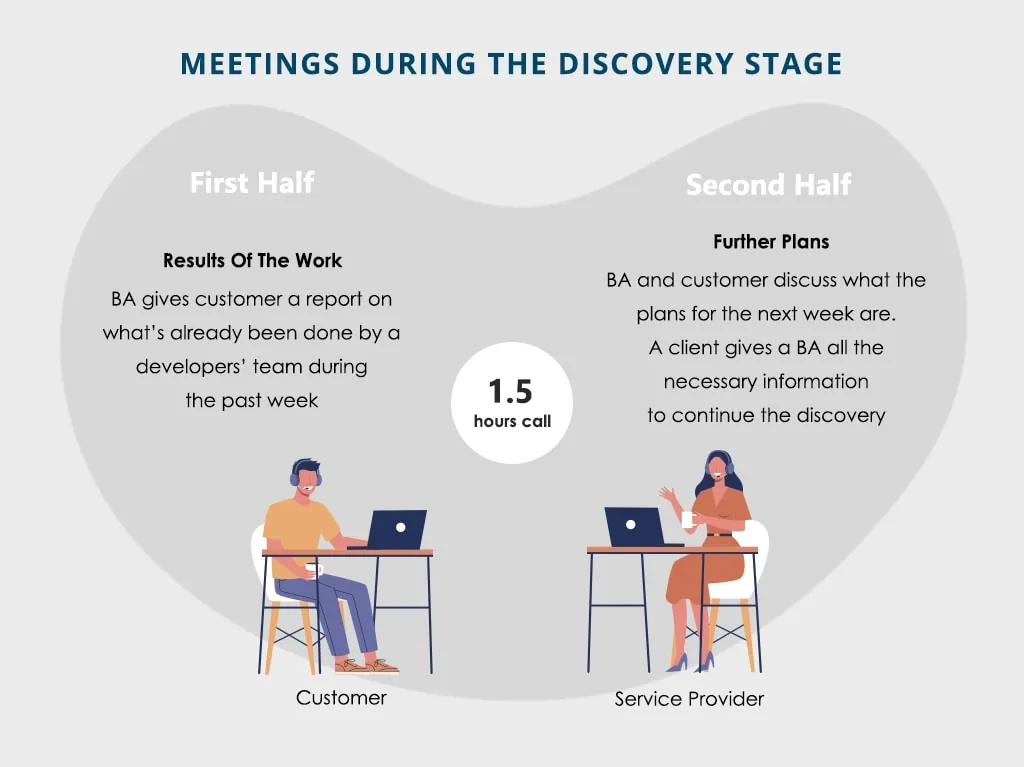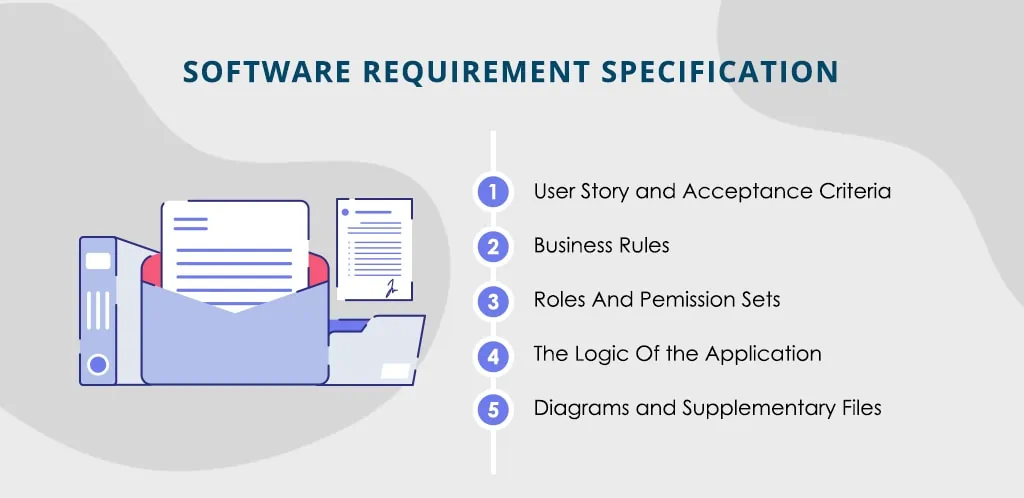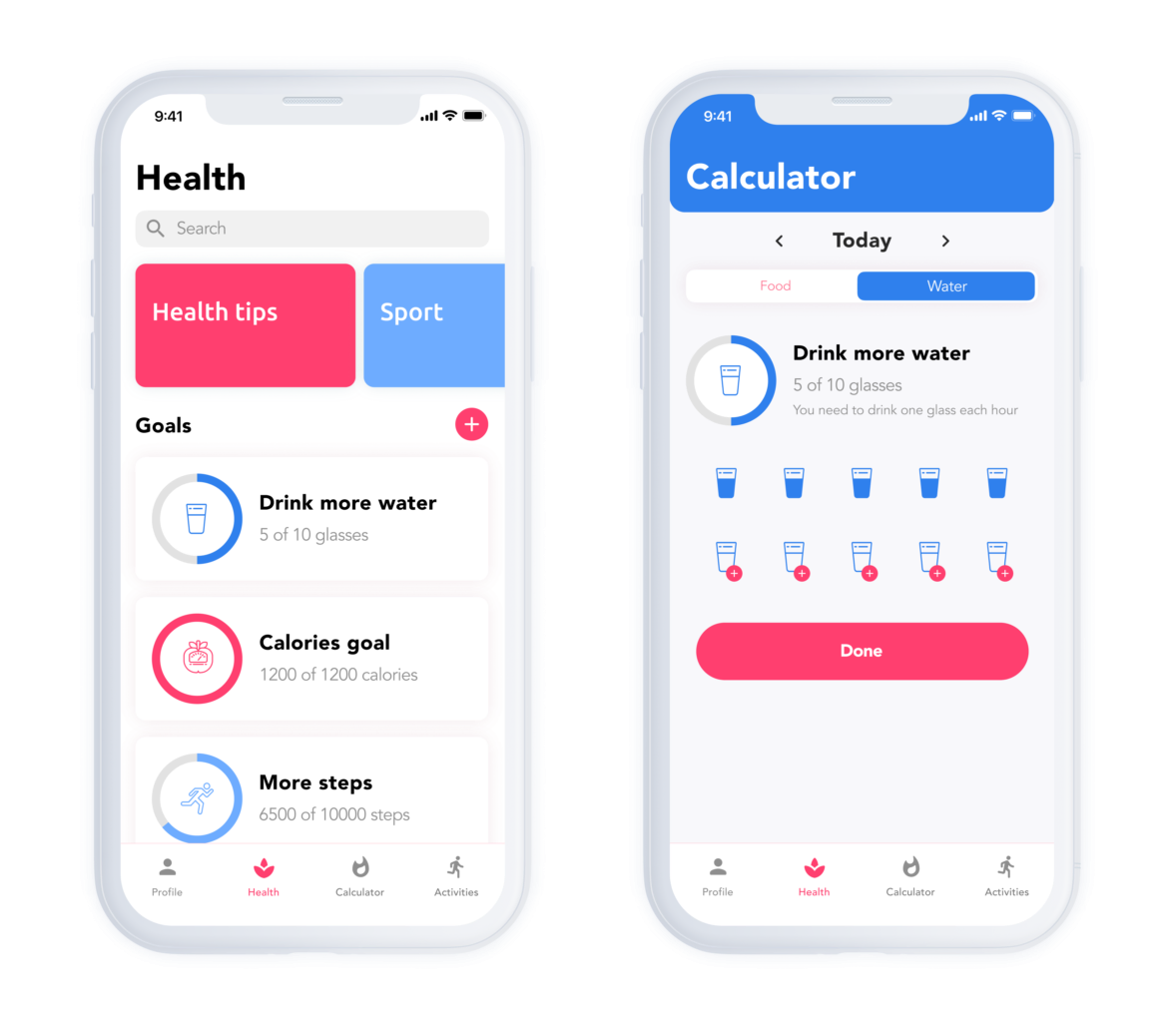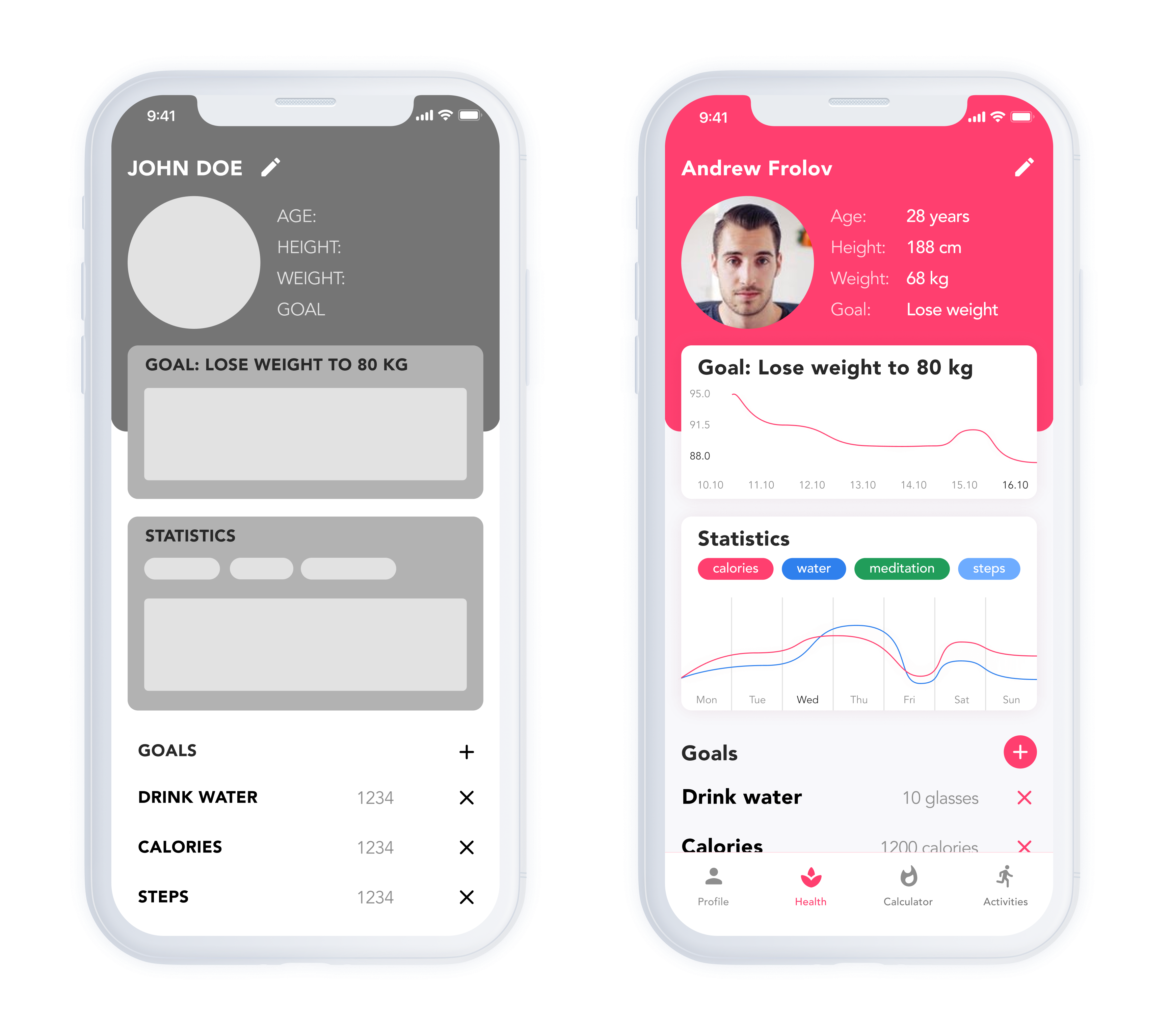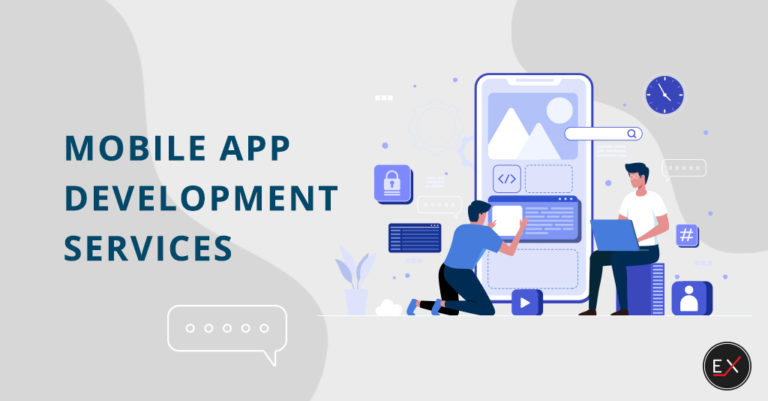
Updated: May 10, 2024
Published: December 29, 2020
You don’t want to stand aside while some companies are building your mobile app? You want to participate in the process actively but know too little about custom mobile app development services? This article is basically a step-by-step guide to the development process. We described what a service provider’s team does, and how it looks to you, as a customer.
Custom mobile app development services by third-party companies often look like a long and complicated process. In most cases, cooperation between a client and a vendor seems so overwhelming to customers because they don’t know what to expect and are afraid that they won’t be able to support the development team with the information they need.
However, by hiring a team of professionals, you’ll avoid a significant part of the stress. Specialists will do everything to make the development process as easy and understandable for the customer as possible. Let’s see what you should expect from each development stage and how hiring an experienced team makes the process easier.
List of the Content
- Custom mobile app development services: description
- Discovery stage
- Development and launch
- Support, maintenance, and updates
- In conclusion
The number of mobile phone users is quite big, and this research shows that it’ll only continue to grow. That’s why mobile applications became a necessity for any kind of business. Therefore, at some point, many companies resort to software development agencies that provide enterprise mobile app development services or those that work with startups. There is always such an option as hiring freelance developers, but choosing the right specialists might be challenging and bring unexpected outcomes for someone who has never worked in an IT sphere. In this case, hiring a ready-made programmer team is the best option as it eliminates the possible risks and extensive waste of time and money.
Companies that provide custom mobile app development services already have their teams gathered. They contain trained specialists that specialize in building high-quality applications for different platforms and different purposes.
However, for business people who have never dealt with the development of some solutions, the overall process may seem tricky and put them into a very uncomfortable position. They don’t want to spend any extra resources; they just want to get the results as fast as possible with the smallest possible interaction. But it doesn’t work like this. At each development stage, different specialists at the services provider’s side, including business analysts, developers, designers, etc., need to collaborate with the customer to understand his needs and expectations better.
In a good team, software development is a well-coordinated process with strictly defined stages and deadlines. So, all that seems tangled from the outside is very well planned.
The main goal is to give customers a clear understanding of which result they should expect from the company that provides app building services. We’ll look at the stages of mobile app development, how long they take, and how costly each of them may appear.
CUSTOM MOBILE APPLICATION DEVELOPMENT SERVICES DESCRIPTION
The development process is always complicated and can hardly be described in a few sentences. However, we’ll try to provide you with an overall picture without going into the details very much. Each of the stages will be described more extensively in the next paragraphs.
Custom mobile app development services start with the pre-development, or discovery stage. A project manager/product owner on the client’s side works with the business analyst on the side of a mobile development services provider.
The discovery stage aims at forming a full understanding of a future application. How will it work, what will it do, how much resources will it require? A client answers these questions in the dialogue process with the business analyst (BA).
The next step is a preliminary cost and timeline estimation. BA and project manager divide the whole project into small steps and estimate approximately how much time in hours it will take. For example,10 hours to complete the login screen, 20-25 hours to integrate with PayPal, etc.
Once the client and the team are agreed on each point, the discovery stage is over.
The next big stage is development. IT specialists do the backend and frontend development, which includes creating databases, integrating them with various systems, etc. Backend and mobile front-end teams work simultaneously, gradually connecting the mobile app interface with the server’s processes.
The development process is divided into sprints or milestones with the set amount of screens/ features planned. When another one is ready, you, as a customer, receive a demo to accept or reject it. Then the process starts over for the next milestone until the whole project is completed.
Eliminating all possible mistakes by QA engineers is an essential part of the best custom mobile app development services. A client is not involved in this process that much, and his task, in the end, will be checking the overall quality of the app and accepting it or sending it back for additional development. No software is launched without bugs. However, the main task here is to make sure that the app’s crucial parts work flawlessly before publishing it.
Support, maintenance, and updates are the last essential point in the app building services list. During the testing phase, there might be missed such details as the app launch on a previous OS or an old device. These inaccuracies are fixed during the support and maintenance stage. Altogether, the final step is about maintaining the application in the correct state without bugs.
Timely updates are also significant. It is necessary to find a balance between implementing new features and not adding too many useless components. During mobile development, specialists use various Agile methodologies for the updates stage. All agile methodologies consider establishing good relationships between clients and service providers to be more critical than doing a job according to the strict plan.
The most popular one is Scrum. It aims at developing new updates and features according to the same scheme as the whole app. When it is time to implement new features, they go through the same stages as the application did.
The budget for the support and maintenance stage should be planned in advance. Most companies estimate it as about 15 percent of the development for annual maintenance.
CUSTOM MOBILE APP DEVELOPMENT SERVICES: DISCOVERY
Discovery Stage: Short Description
The discovery stage is all about forming a perception of the project. At this point, various specialists gather information from both the client and the service provider’s side. Their main goal is to understand how an application will function, look, and other details.
Altogether, at the end of the discovery stage, all team members get a plan that describes the application in the smallest detail, how it will look, and how it will function.
Sometimes, people approach software development companies with an RFP document that shortly describes the project and its details. In this case, business analysts have less work because they already have the basis for further documentation.
The documentation received at the end of discovery also contains various app guidelines, including every screen content, visual presentation, and how the data and features are interconnected.
In turn, you, as a customer, receive the work plan that a mobile application development services provider follows. So that you know what you should expect from each development stage. You’re also shown the wireframes and mockups that display how the app will look like.
The discovery stage is, undoubtedly, one of the most crucial development phases. That’s why so many specialists are involved in it. They include project managers, business analysts, UI/UX designers, etc.
Discovery Stage: Timeline
The main point of the discovery stage is collecting as much necessary information about an app as possible. Companies that provide the best mobile app development services always consider this stage crucial. To do that, the service provider assigns a business analyst to collaborate with the person on the customer’s side. Usually, it is the member of the client’s team who has a helicopter view on how business is working in general and what the needs are. Additionally, they can identify the employees in an organization with the knowledge required to work on some particular modules of the future solution, like the general ledger or manufacturing module.
Besides a business analyst, UI/UX designers and system architects are a part of the mobile development services provider’s team. BA is responsible for the full discovery stage as he collects all the information, and then, designers use it to create wireframes and mockups.
As for the BA’s work, at first, he does high-level requirements collection. At this point, he gathers only the general info about an app to find out the subjects that require further investigation. This stage takes about a week. During this stage, such questions are revised:
- What product they want to get in the end
- Who are the stakeholders
- Who is the target audience and how to meet their expectations
After this is done, a service provider can approximately estimate the project’s timeline and the price range. If they work for a client, the team proceeds to the discovery itself.
Mobile development services providers always give you, as a customer, wireframes/mockups, and a Software Requirement Specification document (SRS) at the end of discovery. An SRS is built on the information gathered by the business analyst. It also includes all visual components (wireframes, mockups, diagrams, etc.)
The final stage, which includes a lot of customer involvement, is the in-depth discovery. Let’s look at the organizational part of the process.
At this point, the service provider and a customer have meetings regularly. Usually, one session takes about 1.5 hours. The first half of it is generally discussing what has already been done by the service provider’s team. The second half is about further plans. During the second part of the meeting, the business analyst is usually the central part of the work. He gathers more information so that a team can work further on the discovery stage.
All the information gathered during the meetings by the business analyst fills an SRS document. It looks just like a conversation for a client, but the documentation is being formed while it’s going. For each meeting, UI/UX designers prepare wireframes and mockups of that part of an app, which is already discussed. Let’s look closely at documentation and design separately.
Documentation
User story and acceptance criteria. The documentation starts with the user story. On its basis, specialists form the acceptance criteria. Let’s see what each of these means. A user story may be created by the client himself or with the help of a business analyst. It answers these questions:
- Who am I on a project’s scale?
- What do I want from the service provider?
- Why do I want it?
For example, “I am a project manager. I want to have a tool to track the workers’ progress to provide the stakeholders with the most relevant information.”
A client may come to a mobile app development services provider with a ready user story. More often, a customer forms it, and the user acceptance criteria with a business analyst’s help. BA helps customers look at the future application from the clients’ side to not miss out on some crucial points. Active phone users often don’t pay attention to how and what actions they do in an app. They just do them automatically. A business analyst and UX designer’s primary goal is to place the app’s features exactly where users expect them to be.
As each next part of an app is discussed, user acceptance criteria are being formed. It is a sequence of actions that should be performed by the system in response to the user’s actions to receive the expected result. It contains detailed information about how the application should work when it’s ready, including when notifications appear, what this or that button does, etc. So, it is an app workflow step by step.
Business analysts should also consider many essential points, such as target audience, missing features, several applications (for users and the writer, according to the last described user story).
Forming business rules is next on the list of app building services. Some applications have particular restrictions. For example, buyers can’t order an item that is out of stock. Instead, he can opt in to be notified once the item is available again. Such points are in the category of business rules. Mobile development services providers fill this document when the user story is ready. You may not foreknow all such rules in advance, so it is better to work on them with the experienced BA who completed dozens of apps in various industries.
The next stage is setting roles and permission sets. Roles define how much access an exact user will have within an application. Admins or managers will have more control than other users. Thus, there is a specific hierarchy of users. Permission sets, in turn, are bonded directly with roles. Each role has a set of permissions, which define what exactly he or she can do. Speaking about “consumer” mobile apps, it is less critical because all the administration of an app is on the administrator dashboard. And regular users just don’t have access to it. But depending on the monetization model, there could be various tiers of the users that can have or not have access to the premium features, etc.
The logic of the application. UX designers use wireframes as a powerful tool to create screen designs. They show how the app will function logically but don’t include graphic design. Wireframes are just a bare-bones visual representation of an app. They offer only its structure, as the content of the screens and controls. At each phase of wireframe development, you can see them and correct mistakes if there are some.
Software Requirement Specification. The knowledge that the BA gathered during the dialogue with clients and the team is used in the Software Requirement Specification (SRS) document. Its creation is entirely on the best mobile app development services provider’s side. It contains all the essential information about an app. SRS explicitly explains how exactly the application should work when it’s ready, including even the smallest details like where the buttons lead, which items the menu contains and what they do, etc. It should also include such information as UI/UX logic, application backend, further integration, target audience, color scheme. A project management team uses it in the further development process to keep track of the critical points.
What is a user story?
Collaboration tools in a browser don’t differ much thus, knowledge of Google Docs or Spreadsheets, for example, helps to master collaboration in Figma.
Creating the acceptance criteria is among custom mobile app development services. It is formed based on a user story. This document more explicitly describes the features of an app.
What is user acceptance criteria?
Acceptance criteria is a step by step application workflow or a set of specific conditions that must be met by the application. User acceptance criteria explicitly describe what the expected results of the user actions should be.
After the concept of an app is straightforward, BA works with the UI/UX designers. He shares user acceptance criteria with them so they could understand the app’s functionality as well. After this, the designers create wireframes – layouts of different screens of an application also included in the SRS document. The main goal of these layouts is to form functional logic and predict user flow. For example, it means considering where a particular button will be so it will be comfortable for the user to click on it and many other details.
Database Design is an integral part of requirements specifications. It tells what data will be stored in the database and how it will be interconnected. At this stage, specialists choose one of the database models and organize the data accordingly. They classify the data and determine the interrelationships between the elements. Usually, two kinds of experts do the database design: ones work with databases, and the others work with domains. Domain experts are essential as the data is drawn from there to be stored in the database.
Diagrams and supplementary files. Now, the documentation phase is almost over. Information is better acquired when visualized. That’s why maps or other supplementary files became a necessary part of the pre-development stage. Members of the team create those on many steps, and in the end, they bring them together to see the overall picture. At this point, the team is completely done with documentation, and you, as a client, can see the whole picture and analyze whether something is still there to correct.
Design
The design usually contains three stages:
- Wireframes
- Mockups
- Prototype (optional)
These stages are different levels of visual design. Wireframes show only the structure of the application. Designers create them in black and white. At this stage, no pictures or fonts are included. They present an app as a bunch of blocks that display where the element will be. Balsamiq is considered one of the best solutions for wireframing.
Mockups are the most crucial stage. They include colors, illustrations, texts, etc. Altogether, a mockup displays how the finished product will look like, but it’s not interactive. While it’s a mockup, you can’t click the buttons and navigate through pages, and you see only a visually designed layout of the app. Figma makes mockup creation fast and easy.
Prototypes look almost like the finished apps, but they work only in prototyping software like Figma or Invision. Only limited controls are working on imitating the behavior of the actual app. Prototyping is not essential, but many companies that provide the best mobile app development services require it. It provides the developers with a sample of where and which animations and transitions should be.
What are the best wireframing solutions?
Curious to find out more about visual design and have an explicit explanation of the described design stages?
Discovery Stage: Summary
It’s difficult to estimate accurately how much time the discovery stage will take. It varies due to the complexity of a product. But for a rough estimate, let’s say that for the application with under 100 screens, it’ll take about 6-8 weeks for discovery.
It is a crucial stage for both sides: a client and the custom mobile app development services company. IT specialists get a clear understanding of the application’s logic before they start coding.
The design stage helps significantly in understanding the logic. With the wireframes and mockups, you, as a client, can actually see how the app will look like when it’s done. However, the design is important not only to the customers but for the developers as well. That’s why it is a great deal of the pre-development stage.
A customer receives full transparency in the process, so he/she can further trust the development team. It takes time and money to complete a useful discovery, but it saves these resources in the long run.
As you, as a client, give them all essential information, at the end of discovery, they have to consult with you to make sure that everything was taken correctly. You have a chance to rethink everything again to let the team know whether they should start the development or correct some point at first.
So, when all the documentation and design are over, a client and a company that provides app building services make an agreement, and the development stage starts.
CUSTOM MOBILE APP DEVELOPMENT SERVICES: DEVELOPMENT AND LAUNCH
Development And Launch: Short Description
The development stage is the longest one and probably requires the most immense amount of work. Programmers do the coding during it, and QA engineers check an app for bugs and possible improvements. All this work can be organized in different ways. There are various SDLC models for it, which we’ll discuss later on.
Development And Launch: Timeline
SDLC stands for Software Development Life Cycle. The concept implies stages an app goes through while being developed. Mostly they are:
- Analysis
- System design
- Development
- Testing
- Deployment
- Maintenance
What different SDLC models are there?
Want to know more about SDLC models and which ones to choose?
Depending on the SDLC model, programmers plan their work differently. Agile is the most popular option nowadays, especially in mobile app development. It is based on such a concept as Sprints, which is the base of the Scrum approach.
Such a model is the most comfortable for the customers as it allows them to keep track of the progress and revise the details.
At the stage of development, almost no customer involvement is required. Programmers load a demo version of an app on Android or iOS. They consequently upload the changes there as the development goes. The development is divided into sprints. Sprints mean that one iteration of programming takes a week or two. And then it goes over again: another fortnight-period starts.
During the discovery, the mobile app development services provider and a client agree on what each sprint’s results must be, what features an app must have by that time. At the end of the sprint, you, as a customer, receive the demo version of an app supplemented by a presentation of the work done. At this point, you can either accept the result fully or make your changes and initiate a recall.
It is the point of Agile – after each iteration, a customer can see the actual results and see the app in use.
Why choose Agile?
Agile is the most comfortable methodology for customers. They can make changes and adjustments right in the middle of the development process, which is not possible while using other SDLC models.
One significant advantage of Agile is that it is very customizable. It means that between development iterations, a client can make changes in the initial plan. Or a customer may not have a particular plan at all, only initial requirements. However, Agile is right even when the software requirement specification is ready, and everything is thought-ahead. In this case, the main principle of Agile is transparency and mutually beneficial working relationships.
At some point in the development, a service provider’s team receives a so-called day-one app. It means that not all of the features are implemented, but it works well enough for uploading it to AppStore. It allows specialists to see what are the weaknesses that they might have missed and what are the critical points altogether.
Of course, this app version is shown to a client, so he/she can make all the needed adjustments. But at this point, it’s difficult to estimate if an app needs any because it hasn’t been tried by real users yet. And this is the primary goal of launching the day-one application. It sometimes happens that what was planned to be the main strength of an app may not be attractive to users, while ill-conceived parts may be critical. That’s why letting real users try it is an excellent way to determine what improvements should be made.
It is one more reason why the Agile model is highly recommended in mobile development. You can change some of the priorities right in the middle of development. It is not a problem for the Agile methodology opposite to other models. When programmers work according to other SDLC models, they stick to the initial plan and show only a final version of the app to the client. If you, as a customer, don’t like something, it’ll take much more time and other resources to redo it.
Development And Launch Stage: Summary
Altogether, during the development phase, the programming team writes codes using wireframes created previously. They share codes with the client so he/she can make changes at any moment of development. When a customer approves an app, QA engineers test it for bugs and possible improvements. If they don’t find any errors, the first version of an app is uploaded to AppStore. Specialists see how people use it and do the analytics to figure out what they can upgrade or remake.
The development and launch stage takes about 6-10 months on average for an app of about 100 screens. Again, it depends very much on the complexity of an application.
CUSTOM MOBILE APP DEVELOPMENT SERVICES: SUPPORT, MAINTENANCE, AND UPDATES
Support, Maintenance, and Updates: Short Description
Support, maintenance, and updates stage imply everything that the app goes through after it’s released, and people have started to use it. Even though QA engineers have worked hard during the development stage, some bugs will occur only after the launch of an app, and they should be fixed immediately. It can be problems with the app’s usage on the old device or a different OS. Problems with the operating systems appear quite often, but we focus on choosing such technologies that allow avoiding them. That’s why we mostly deliver Flutter application development services when it comes to cross-platform solutions. Those who provide hybrid mobile app development services usually take such details into account to plan their time at the discovery stage. As a client, you can plan your financial resources.
Support, Maintenance, and Updates: Timeline
Specialists may update applications for various reasons, including fixing bugs, keeping up with novelties, or OS updates. Fortunately, the last one is easy to maintain as the developers receive the demos of OS about a month before the public release. That’s why companies release apps’ updates along with OS’s.
At this point, the team of specialists implements various analytics tools. They help to see how an application performs in real life. It allows for planning refinements and fixing unexpected bugs. All the conclusions that analytic tools and user feedback gives us can be added to your product roadmap. It is an optional document. But it’s a good practice to create one. It displays what the app will be at different times of development.
Updates are critical, but it’s essential to find the middle ground between releasing new features and not bothering users with excessive improvements and added functions. If someone stopped using an app, he/she might reconsider it while receiving a notification about the update. Thus, timely updates are an excellent tool for re-engaging the users as soon as they actively use the app.
Altogether, you, as a customer, don’t participate in this development stage. Mobile development services providers take all the responsibility. But if you somehow notice unexpected pitfalls in the app’s work, you should let the developers know so they can fix it even if it’s not the time for updates.
Support, Maintenance, and Updates: Summary
This stage is very long-running, so it’s nearly impossible to do the time estimation. But the expenses for it can be evaluated approximately. Most companies who provide custom enterprise mobile app development services state that the support, maintenance, and updates stage requires about 15 percent of the whole development budget per year.
IN CONCLUSION
This article tried to make custom mobile app development services as transparent for the customer as possible. Hopefully, it got easier to understand the sequence of stages of the development process. Now, if you’ll be collaborating with a service provider, you’ll know how the typical process looks like.
Have some ideas to turn into a mobile application?
Now, when you feel more confident about the process of mobile app development, share your ideas with EXISTEK. Tell us about your needs, and our experienced team will guide you through all stages to make your product the next big thing on the market.
Frequently asked questions
What is custom mobile app development?
Custom mobile app development refers to creating mobile applications explicitly tailored to meet the unique needs and requirements of a particular individual, organization, or business. Unlike off-the-shelf or pre-built mobile apps that serve a general purpose, custom mobile apps are built from scratch to address specific functionalities, branding, design, and user experience.
Why apply for custom mobile app development services?
There are several compelling reasons to apply for custom development services:
Tailored to specific needs
Enhanced user experience
Flexibility
Integration with existing solutions
Competitive advantage
Long-term cost savings
What are the core stages of mobile application development?
The development process to deliver the mobile application covers such core stages:
Discovery
Development
Post-launch
How much does it cost to develop a custom mobile app?
Mobile app development costs could fluctuate between $50 000 for a simple app and $200 000 for complex solutions.



